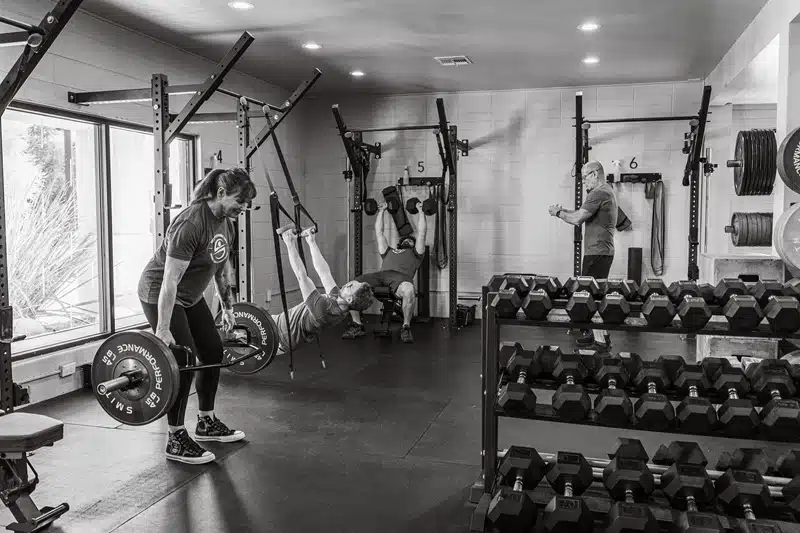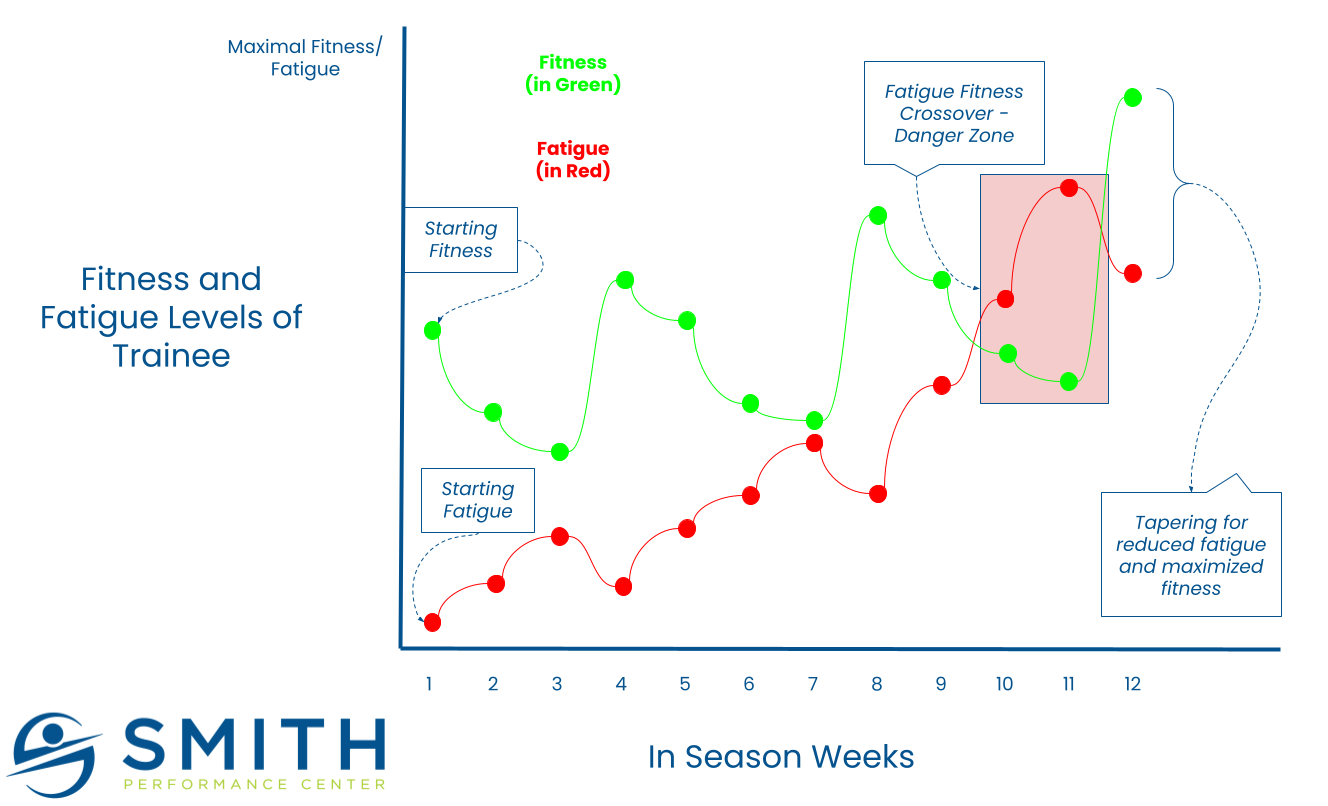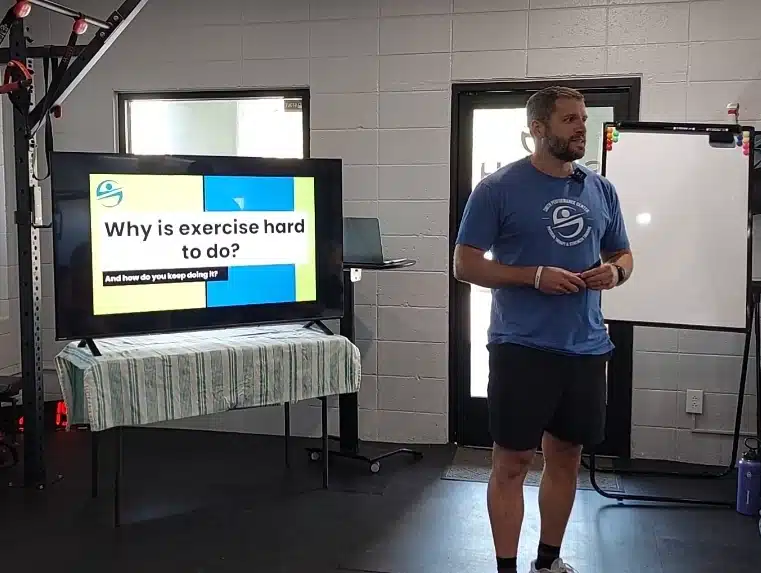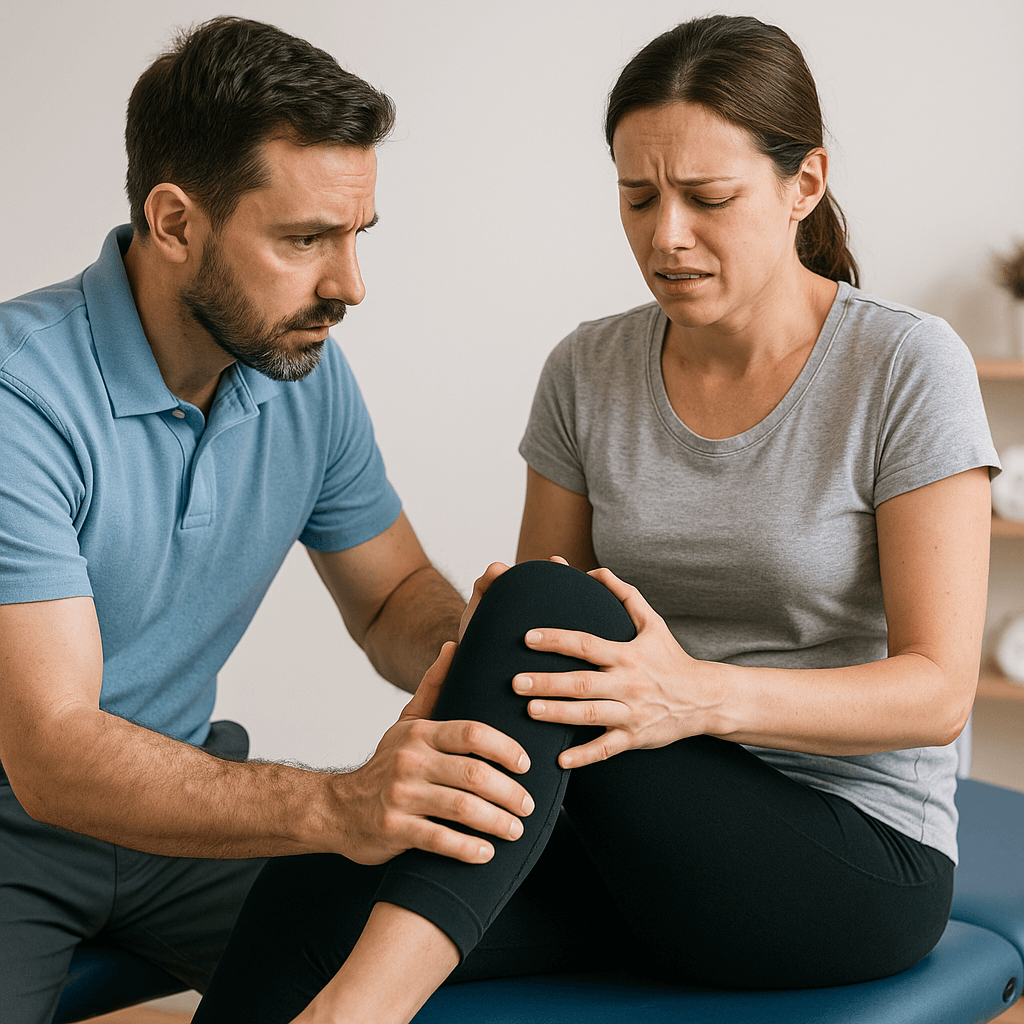Smith Performance Center Blog
Your Trusted Physical Therapy and Strength Training Blog for Injury Rehab and Pain Management
Welcome to the physical therapy blog from Smith Performance Center—your source for expert guidance on injury recovery, pain management, strength training, and sustainable health habits. Whether you’re managing chronic pain, recovering from surgery, or building long-term fitness, our team shares actionable strategies backed by clinical experience and real-world success. Stay up to date with new posts on rehab phases, movement progression, exercise programming, and the science behind making healthcare work for you.


Understanding Vestibular Issues with Alex Griffis, PT, DPT
When it comes to dizziness and balance issues, few areas of physical therapy are as fascinating and misunderstood as vestibular rehabilitation. Dr. Alex Griffis, PT, DPT, sheds light on common conditions like Benign Paroxysmal Positional Vertigo (BPPV) and the surprising role of vision and proprioception in maintaining balance. With techniques like habituation training, he helps patients regain control over their symptoms. If you’ve been struggling with unexplained falls or dizziness, discover how a multi-layered approach at Smith Performance Center can help you regain confidence and improve your quality of life.

From Pain to Progress: Building an Exercise Habit After Injury
A perfect time to build the exercise habit occurs when you overcome a painful injury. At Smith Performance Center (SPC), this happens during the “activity progression” phase after stabilizing symptoms. Unlike a standard exercise routine, activity progression focuses on managing and improving tissue capacity—your body’s ability to handle physical load without pain or injury. If these terms sound unfamiliar, don’t worry. The following signs indicate you may have skipped the fundamentals of activity progression: Why Delaying Exercise Is a Mistake Many individuals delay exercise until they feel completely better. However, this approach has drawbacks: Your Path at SPC At SPC, we’ve developed a clear plan to help you build fitness while overcoming an injury. Here’s how it works: 1. Your Home Plan: Manage Symptoms and

Unlocking Your Health Potential: The SPC Phase Concept of Exercise, Maintenance and Monitoring
At Smith Performance Center, you will hear us mention “phases” or see references on the website or social posts. If this is your first introduction, welcome! The SPC Phase Concept is the cornerstone of our approach. It’s a system designed to solve health challenges, keep you moving, and provide a shared framework for our team to deliver exceptional care. Why the SPC Phases Matter Our mission is to help people stay active, healthy, and capable of enjoying their lives. The five SPC Phases guide you from identifying your problem to progressing toward peak performance. The phases aren’t a one-time journey—they form a cyclical process designed to meet you where you are, adapt to your needs, and keep you moving forward. A key turning point in

Maximize Your Season: Structuring Endurance & Strength Training with Three Key Questions
Structuring your endurance and strength programming can make or break your training. To help clarify your training schedule, we use three key questions to correctly scaffold the program. While the typical question we hear circles around sport-specific exercises, more important questions often get missed—questions that can make or break the season and influence your performance on race day. Question 1: Are You In-Season or Off-Season? Your immediate reaction might be, “I’m not sure what the difference is.” To clarify, our strength coach, Spencer, offers this guidance: “If you’re building up to a specific race and tapering to maximize fitness while reducing fatigue, you’re in-season. Out of season might still include races, but it’s not aimed at peak performance.” To put it succinctly, here’s how our

The 4 Reasons Exercise is Hard to Start and Maintain
Starting an exercise program usually begins with a detailed look at your goals and a plan to achieve them. Showing up consistently is assumed. After decades in the health and wellness industry as a personal trainer, strength coach, exercise physiologist, and physical therapist, I’ve seen firsthand that the problem isn’t your goals, program structure, or knowledge of the importance of exercise. You already know regular exercise is crucial. Nor is the problem finding a place to work out, scheduling gym time, or getting the right equipment for home. The real issue is execution: showing up and doing the work. Exercise is hard to start. Exercise is hard to maintain. Why? There are four major reasons: Evolutionary Mismatch We did not evolve to exercise; we evolved

The Importance of Protein Consumption for Resistance Trained Individuals
Congratulations, you’ve embarked on the journey of resistance training. As you delve into the realm of exercise, one of the first topics you will hit is to up your protein intake. Unlike a few areas that may seem superfluous, it is an important area to get the right nutrients, with protein taking center stage. Here’s a brief overview to ensure you maximize the benefits of your training regimen through adequate protein consumption. Amount To optimize muscle growth and recovery, aim for a protein intake ranging between 1.6 to 1.8 grams per kilogram of body weight daily. This can be confusing, since we do not use the metric system on a daily basis, so we will show both grams to pounds ratio and grams per kilogram

Understanding Vestibular Issues with Alex Griffis, PT, DPT
When it comes to dizziness and balance issues, few areas of physical therapy are as fascinating and misunderstood as vestibular rehabilitation. Dr. Alex Griffis, PT, DPT, sheds light on common conditions like Benign Paroxysmal Positional Vertigo (BPPV) and the surprising role of vision and proprioception in maintaining balance. With techniques like habituation training, he helps patients regain control over their symptoms. If you’ve been struggling with unexplained falls or dizziness, discover how a multi-layered approach at Smith Performance Center can help you regain confidence and improve your quality of life.

From Pain to Progress: Building an Exercise Habit After Injury
A perfect time to build the exercise habit occurs when you overcome a painful injury. At Smith Performance Center (SPC), this happens during the “activity progression” phase after stabilizing symptoms. Unlike a standard exercise routine, activity progression focuses on managing and improving tissue capacity—your body’s ability to handle physical load without pain or injury. If these terms sound unfamiliar, don’t worry. The following signs indicate you may have skipped the fundamentals of activity progression: Why Delaying Exercise Is a Mistake Many individuals delay exercise until they feel completely better. However, this approach has drawbacks: Your Path at SPC At SPC, we’ve developed a clear plan to help you build fitness while overcoming an injury. Here’s how it works: 1. Your Home Plan: Manage Symptoms and

Unlocking Your Health Potential: The SPC Phase Concept of Exercise, Maintenance and Monitoring
At Smith Performance Center, you will hear us mention “phases” or see references on the website or social posts. If this is your first introduction, welcome! The SPC Phase Concept is the cornerstone of our approach. It’s a system designed to solve health challenges, keep you moving, and provide a shared framework for our team to deliver exceptional care. Why the SPC Phases Matter Our mission is to help people stay active, healthy, and capable of enjoying their lives. The five SPC Phases guide you from identifying your problem to progressing toward peak performance. The phases aren’t a one-time journey—they form a cyclical process designed to meet you where you are, adapt to your needs, and keep you moving forward. A key turning point in

Maximize Your Season: Structuring Endurance & Strength Training with Three Key Questions
Structuring your endurance and strength programming can make or break your training. To help clarify your training schedule, we use three key questions to correctly scaffold the program. While the typical question we hear circles around sport-specific exercises, more important questions often get missed—questions that can make or break the season and influence your performance on race day. Question 1: Are You In-Season or Off-Season? Your immediate reaction might be, “I’m not sure what the difference is.” To clarify, our strength coach, Spencer, offers this guidance: “If you’re building up to a specific race and tapering to maximize fitness while reducing fatigue, you’re in-season. Out of season might still include races, but it’s not aimed at peak performance.” To put it succinctly, here’s how our

The 4 Reasons Exercise is Hard to Start and Maintain
Starting an exercise program usually begins with a detailed look at your goals and a plan to achieve them. Showing up consistently is assumed. After decades in the health and wellness industry as a personal trainer, strength coach, exercise physiologist, and physical therapist, I’ve seen firsthand that the problem isn’t your goals, program structure, or knowledge of the importance of exercise. You already know regular exercise is crucial. Nor is the problem finding a place to work out, scheduling gym time, or getting the right equipment for home. The real issue is execution: showing up and doing the work. Exercise is hard to start. Exercise is hard to maintain. Why? There are four major reasons: Evolutionary Mismatch We did not evolve to exercise; we evolved

The Importance of Protein Consumption for Resistance Trained Individuals
Congratulations, you’ve embarked on the journey of resistance training. As you delve into the realm of exercise, one of the first topics you will hit is to up your protein intake. Unlike a few areas that may seem superfluous, it is an important area to get the right nutrients, with protein taking center stage. Here’s a brief overview to ensure you maximize the benefits of your training regimen through adequate protein consumption. Amount To optimize muscle growth and recovery, aim for a protein intake ranging between 1.6 to 1.8 grams per kilogram of body weight daily. This can be confusing, since we do not use the metric system on a daily basis, so we will show both grams to pounds ratio and grams per kilogram




